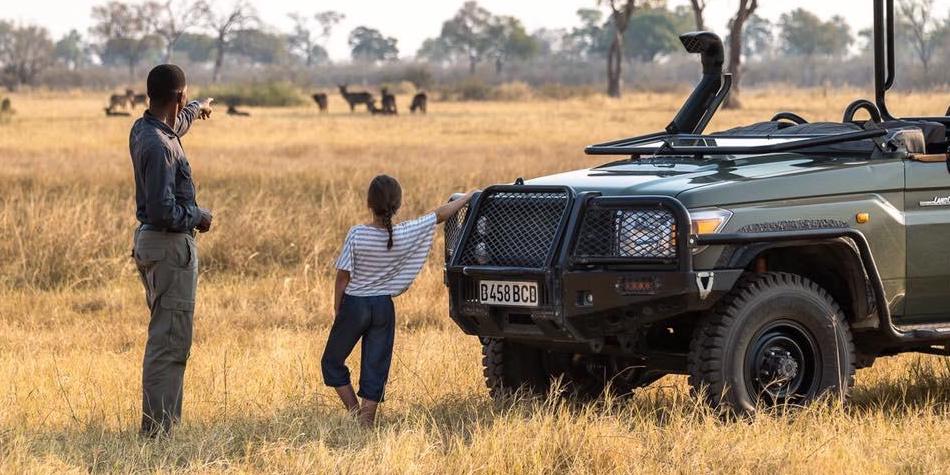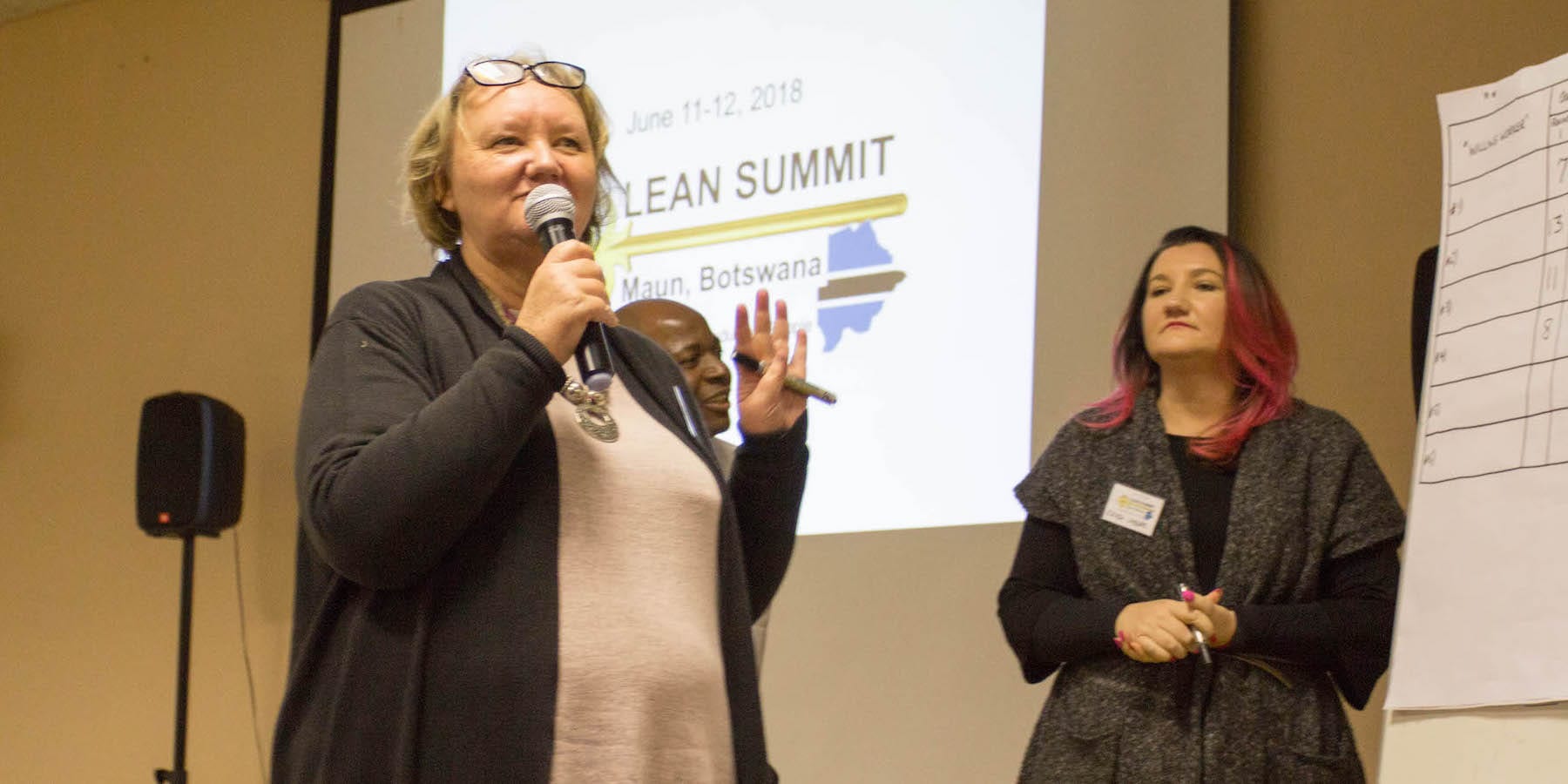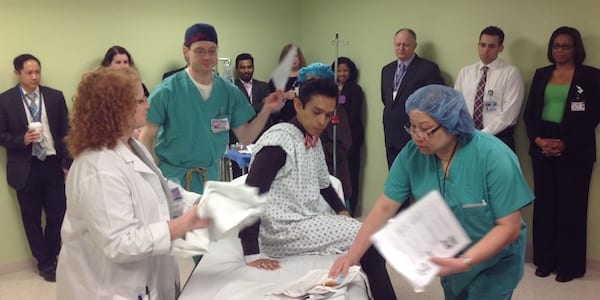
Safari, so good
CASE STUDY – This company in Botswana has embraced lean thinking passionately to build the capacity and ability to deal with higher demand for its converted vehicles. The author tells us about their journey.
Words: Sharon Visser, CEO, Lean Academy Botswana
In 2009, Phil Potter and his son Lee converted their first pick-up truck into a safari vehicle in their home workshop.
When Phil and Lee were done, they realized they had set a standard that matched the conversion work that local companies traditionally outsourced to South Africa. It was the beginning of Kavango Engineering, a family business here in Maun, Botswana that adapts vehicles to harsh environments and allows visitors to enjoy a closer encounter with the African wilderness.
In 2014, Phil handed the business over to his son and Kavango Engineering moved into its new premises. It was around that time Nick Seaman joined the team bringing a unique set of skills with him.
Being close to the product user and having a full understanding of customer needs, Lee and Nick continually worked at improving the product – mainly by using experimentation – and paid a lot of attention to quality.
Both Lee and Nick are perfectionists, and soon the product improved well beyond the level offered by South African companies doing the same kind of work. As they gained the trust of their customer base to deliver and meet their needs, Kavango Engineering grew to be the “go to” company for a safari conversion… with all the growing pains that entails.
In 2015, Lee's sister Nicky joined the company to assist with the increasing administration load and Johannes Bekker (known to all of us as JP) was hired as Workshop Manager to help them meet the higher-than-ever demand for conversions.
Lee had seen some of the changes that had happened at Halfway Ngami and hoped that lean thinking could assist Kavango Engineering as it tried to cope with the spike in demand it was experiencing. So, he sent JP to our first Lean Summit here in Botswana. It was May 2018.
At the event, one of the speakers (and one of my coaches), Dave Brunt, played the ping pong ball game. I sat on the sidelines and observed JP’s excitement as he realized what lean thinking could bring to his area of responsibility. What a joy to see such engagement!
After the gemba walk at Ngami, I could see a determined glint come into JP’s eyes. He had caught the lean bug, good and proper.
Not long after the summit, Lee, Nick, JP, and I walked the business. The first observation we made was that it was very difficult to “see”, because people were working all over the place. A really great product kept coming out the door, but as volumes grew it was becoming harder and harder to get the work done to standard. The management team put enormous effort into ensuring compliance to the quality standards Kavango Engineering had come to be known for, but rework had become an obstacle as quality checks at the end of the process revealed issues.
At that point, Lee, Nick and JP decided that they would start by being brave – this is still the foundation of their “lean house” – and put the build into single-lane flow using their understanding of the work (each of them had direct experience physically carrying out every task to do a rebuild) and their assessment of the time it takes to do the work.
They really went for it: JP committed to transforming a bay per day, as a start (with a total of 22 bays). To do so, he called his team together. They used toy cars and a scale plan to map out the flow. Critically, everyone working on a vehicle had input into this change.
The next time I went to visit them, they were running a single-lane flow. Sure, it wasn’t perfect, but it was good enough that we were finally able to see what was wrong with the work. For me, the most exciting thing was that, instead of being uncomfortable with seeing the problems, the team responded to them in the leanest of ways: by looking for a root cause.
It was at this time that Lean Academy Botswana went in to help Kavango Engineering by providing the team leaders with some training on the basics of lean thinking. We played the simulation games and gave everyone a general idea of what lean is.
At this stage, Nicky gave more of her time to streamline the supply of parts by working on a 5S project, developing and training staff in using software for stock management so that the people working on the conversions would not have to wait as long for parts or consumables to reach them.
JP still found himself firefighting problems way too often, which made it difficult for him to find the time to make improvements. That’s why our next milestone was improving communication on the line to better understand where the vehicles were in the flow. The result was a visual that tracks the vehicles as they move through the process using colored cards. The board is updated daily by team leaders during an Asakai meeting first thing in the morning.
At first, the Asakai was a bit rough around the edges, as people learned how to communicate in the new format. I am now so immensely proud of what they have achieved and in the growing confidence of team leaders in talking about where they are in the process. The meeting always begins with a bay roll call – something I learned from Steve Hobbs, an industrial psychologist, and that turns the switch from “Home” to “Work” at the start of the day. (This is especially important on a Monday morning, we have found.)

To promote buy-in and bring a sense of fun to the work, we created a visual (built using cheap curtain rails) showing a horse race that represents a race among all the bays: the horse (bay) slides along the track, with each marking showing one day. If the team has completed the work according to plan, they can move the horse forward; if they haven’t, the horse stays where it is. Initially, this didn’t have much of an effect, but after each team named their horse they developed a stronger sense of ownership, making the race an integral and lively part of the Asakai meeting. This simple system is also used to encourage the handing over of quality, as the horse cannot move if it does not have quality.
In July this year, the University of Botswana sent us two Industrial Engineer graduates for two months, Tlamelo Masheko and Oratile Timothy, who came to assist us so they could learn more about lean thinking and we could get the extra hands to help measure. So, we took on the task of measuring the touch time of a full conversion using a visual based on a Yamazumi chart.
People were happy to work with these two young ladies from their own culture and shared their understanding of the work with them, and time was measured for a full safari conversion and some extra drop-in work done for Kavango customers.
This has been a win-win for everyone: the University now has a lean production line for students to go and observe, so much so that they are now looking at sending a Masters student to assist us. On our part, we got the assistance of the constant observation and feedback of the students and workers had the learning experience of interacting with the students and measuring time with them. They have paid a great deal of attention to the outcome and have a much better understanding of the work as a whole. I believe that the measuring alone has changed behaviors at Kavango!
We are now working on our next problem – using visual management to improve the work. Of course, there is no one better to do this than those who perform conversions day in, day out.

I can’t stress enough the importance of Lee’s contribution to the outcomes achieved by the team, with his quiet support and eye for detail, his willingness to let JP get on with the task at hand and to just listen and gently ask questions.
It could not have happened if Nick, Nicky and JP had not been on board. I am very grateful for their willingness to always give me their time – however busy they might be – so problems can be solved and improvement can continue.
In July this year, Phil Potter sadly passed away, but he was able to see the start of an amazing transformation to the legacy he passed onto his son. I was able to tell him about his amazing children and what they have accomplished with the business, which for me was an honor.
Like others I have shared here on Planet Lean, this story too is about wonderful people who decide to be brave and make the lean leap. As I get to know more and more organizations that decide to embark on this journey, it occurs to me that people really are at their best when they work as a team solving problems to have a better day at work!
THE AUTHOR

Read more


INTERVIEW - Planet Lean speaks with Constantin May, Academic Director of the CEPTM institute at Germany’s Ansbach University, which organized the first Lean Educator Conference in Europe in co-operation with LGN.


INTERVIEW - New York City's public hospitals system leveraged lean principles and techniques to improve the quality of care and boost organizational performance.


INTERVIEW – Atlantis Foundries was able to achieve zero defects for three months in a row thanks to machine learning. Here’s why the human component can’t be discounted.


VIDEO INTERVIEW – This hotel in the Canary Islands is bringing lean to its Kitchen Department, hoping to streamline the process and provide a better service to diners.

